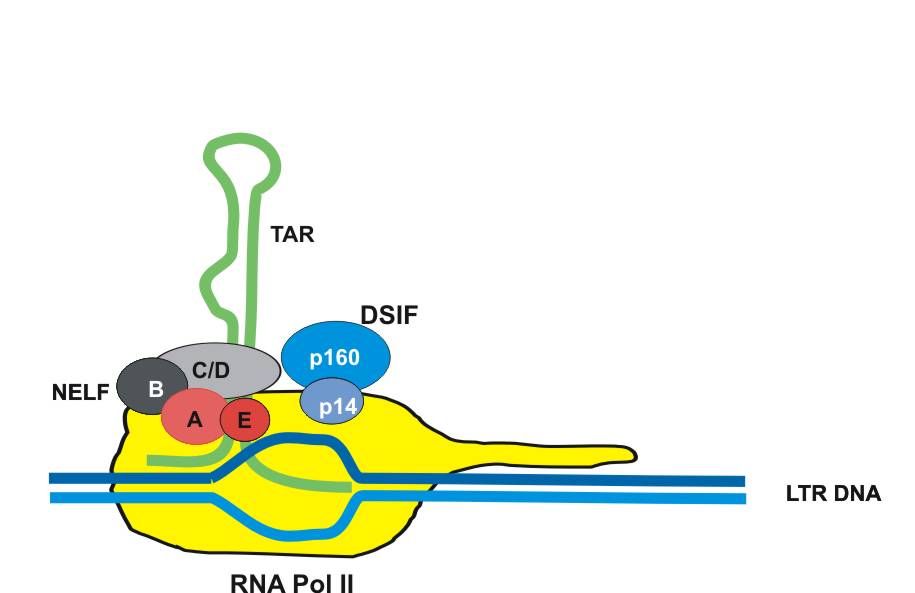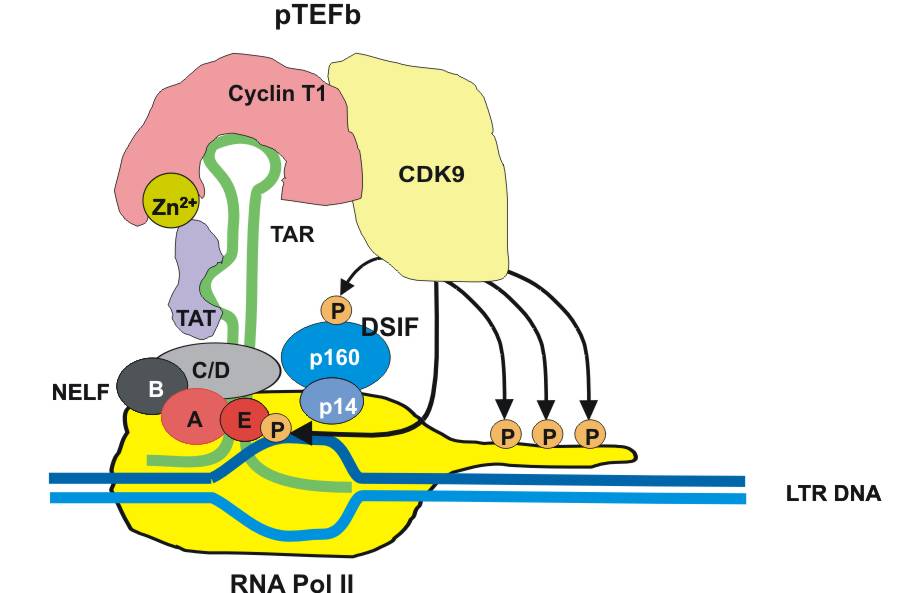

 |
 |
HIV Termination/Antitermination of Transcription
Retroviruses are + stranded RNA viruses that can cause various severe diseases among humans and animals. A well known member of the family retroviridae is the human immunodeficiency virus HIV, the causative agent of Acquired Immunodeficiency Syndrome (AIDS). AIDS is an infectious disease which affects about 40 million people worldwide. Until now, no vaccine against HIV is available. Several drugs are used to treat HIV infections, however, resistant strains can emerge under the selective pressure of these substances. Therefore it is necessary to define new targets for the development of more efficient drugs against HIV. A promising potential target is the termination/antitermination complex which forms during HIV RNA transcription. Inhibition of complex formation could potentially interfere with HIV replication. After the virus enters the cell the viral RNA is reverse transcribed into double stranded DNA which is then integrated into the host genome. At this step synthesis of new viral RNA is tightly controlled by a complex interaction of viral and cellular proteins which bind to the stem loop structure of the TAR RNA that is comprised of the first 60 nucleotides of the viral RNA. Once TAR RNA is synthesized by the cellular RNA polymerase II, transcription is terminated by binding of several cellular transcription factors like DSIF and NELF (Fig. 1).

|
Only if the viral protein Tat is present and binds to the bulge of TAR the cellular transcription elongation factor pTEFb is recruited. Upon phosphorylation of RNA polymerase II, NELF and DSIF by the kinase component CDK9 of pTEFb, antitermination takes place and TAR can be elongated to the full length viral RNA. (Fig. 2)

|
We analyze the binary and ternary complexes of Tat/TAR and of Tat/TAR with cyclin T1, another component of the pTEFb complex. Furthermore we are interested in the structure and function of NELF which consists of 4 different subunits and works as a negative transcription elongation factor by binding to TAR. The NELF E subunit is responsible for RNA binding and in addition harbors regions that interact with other NELF subunits. Structural and functional analyses by NMR, CD and biochemical assays are being performed to determine the interactions of the various components of the HIV termination/antitermination complex.